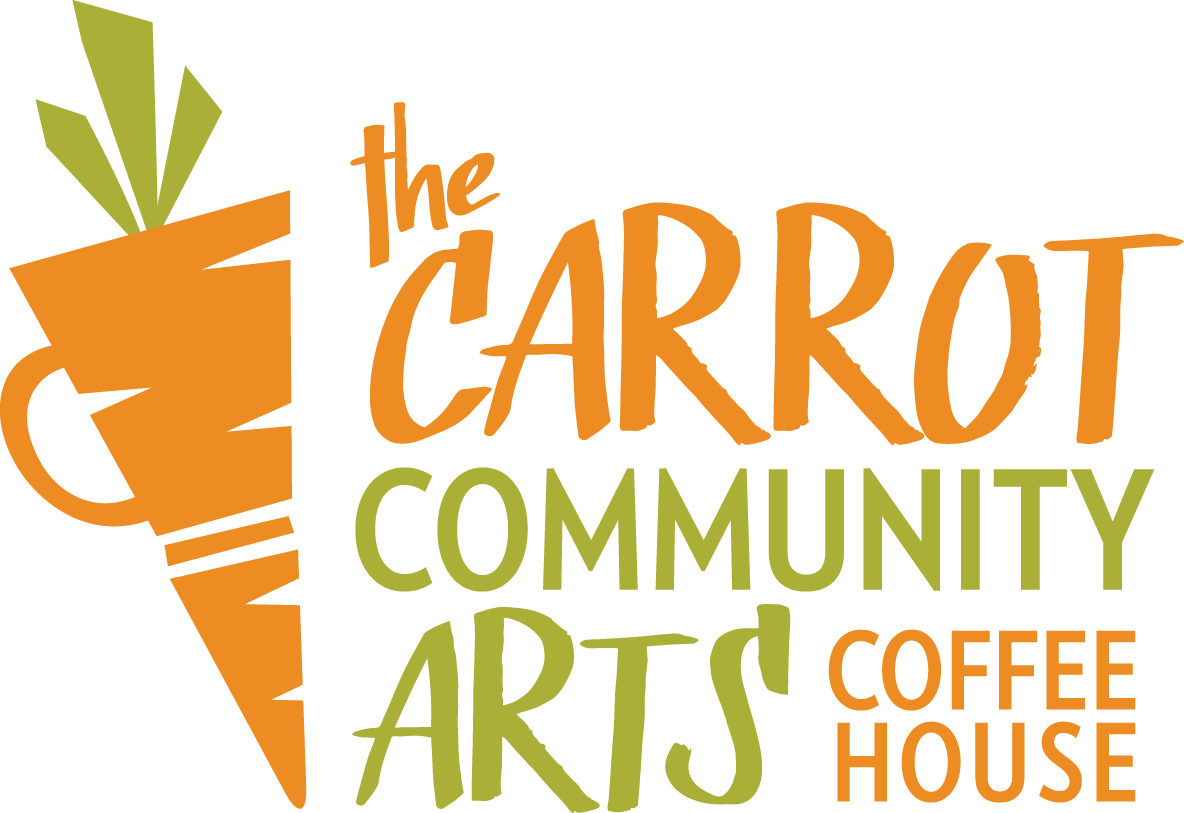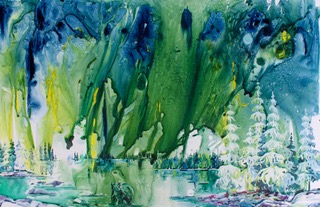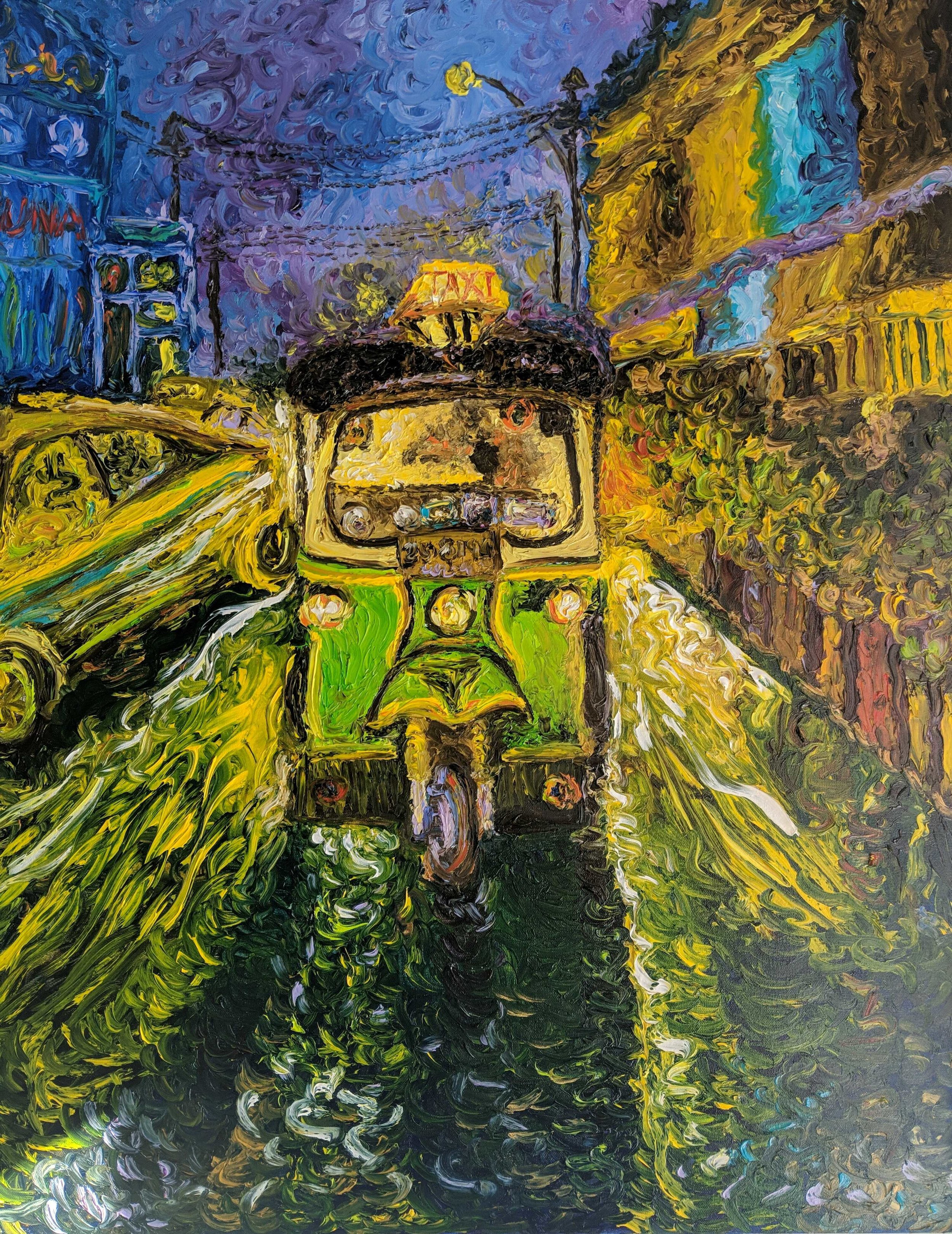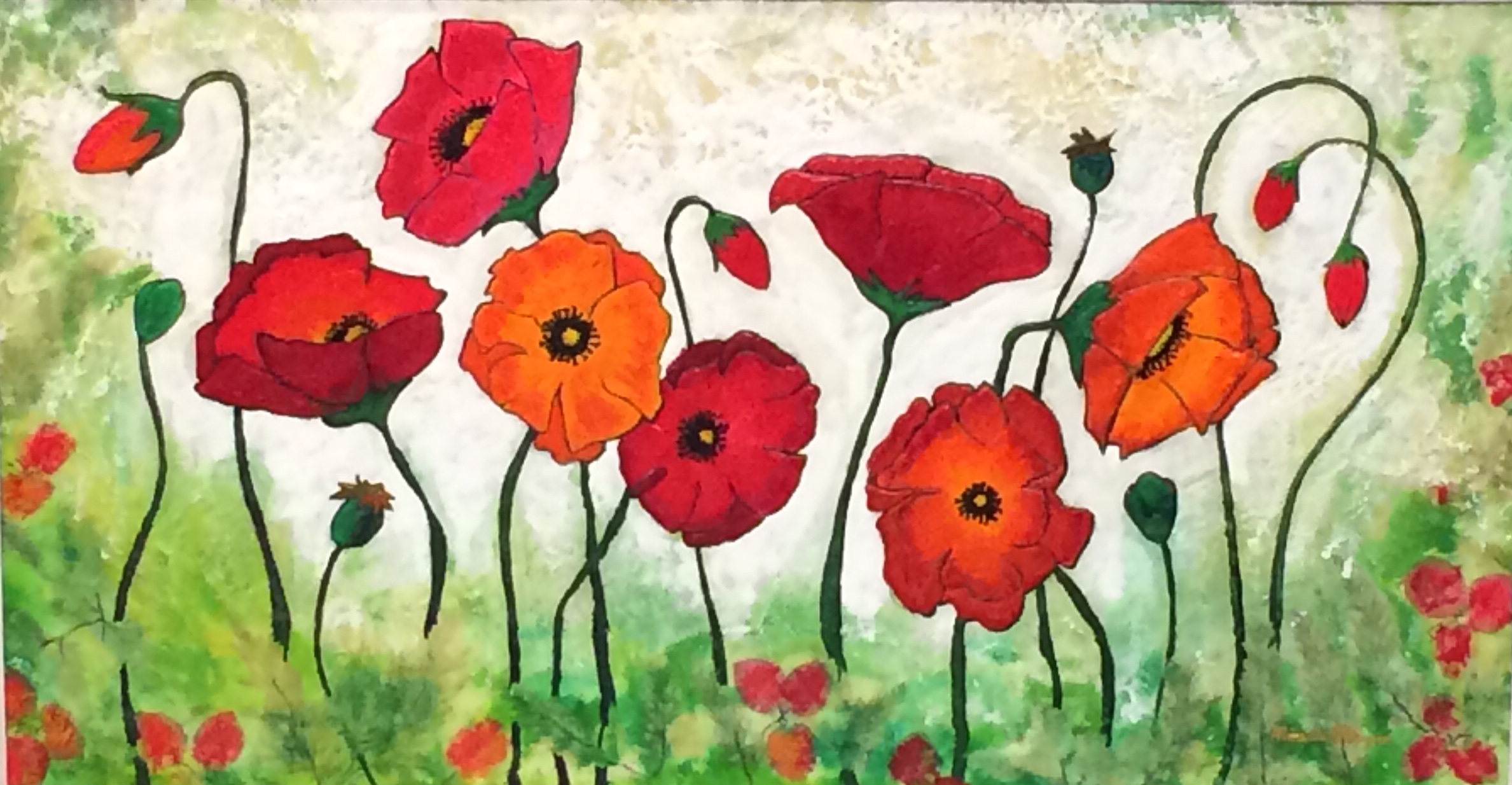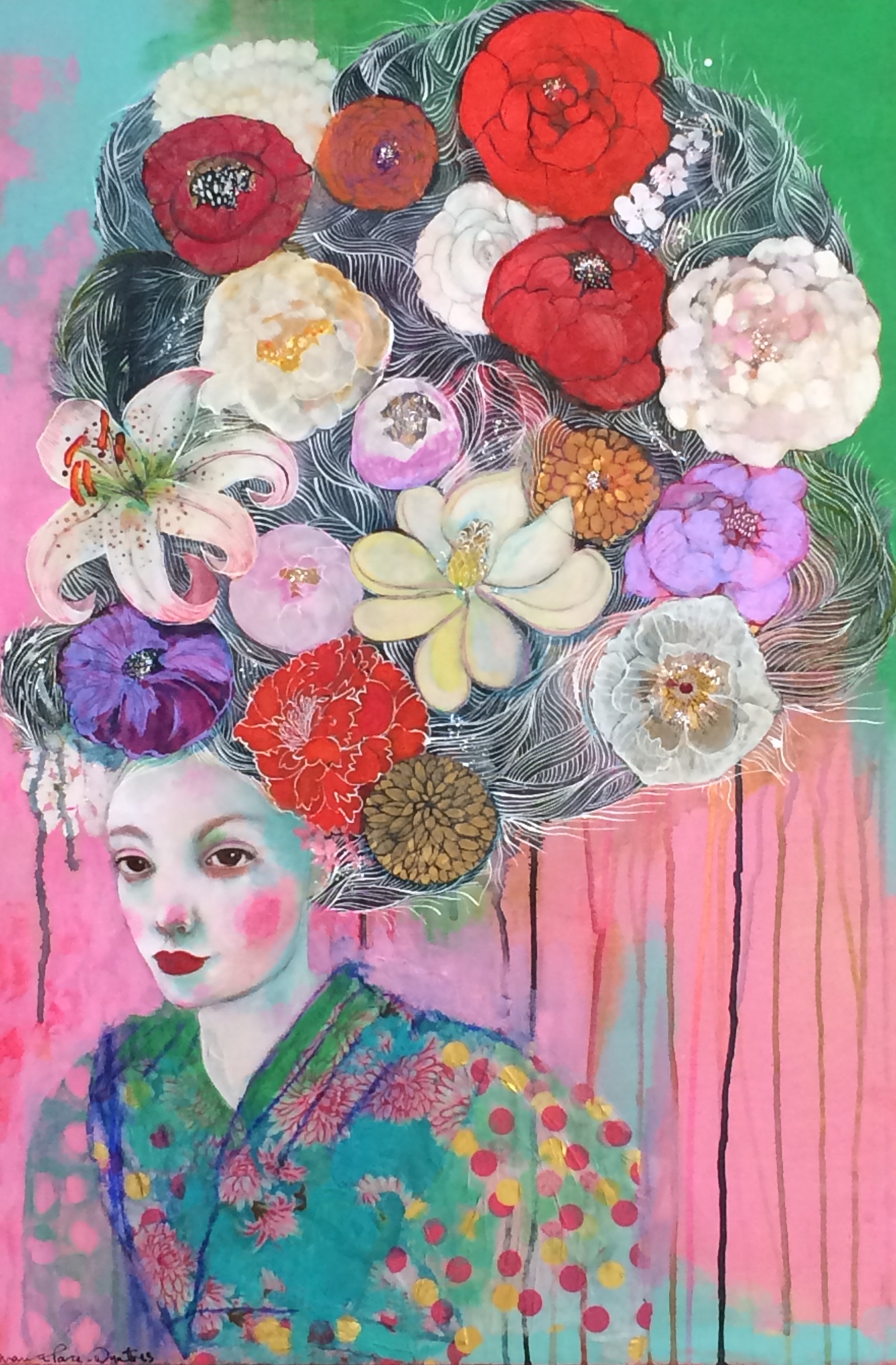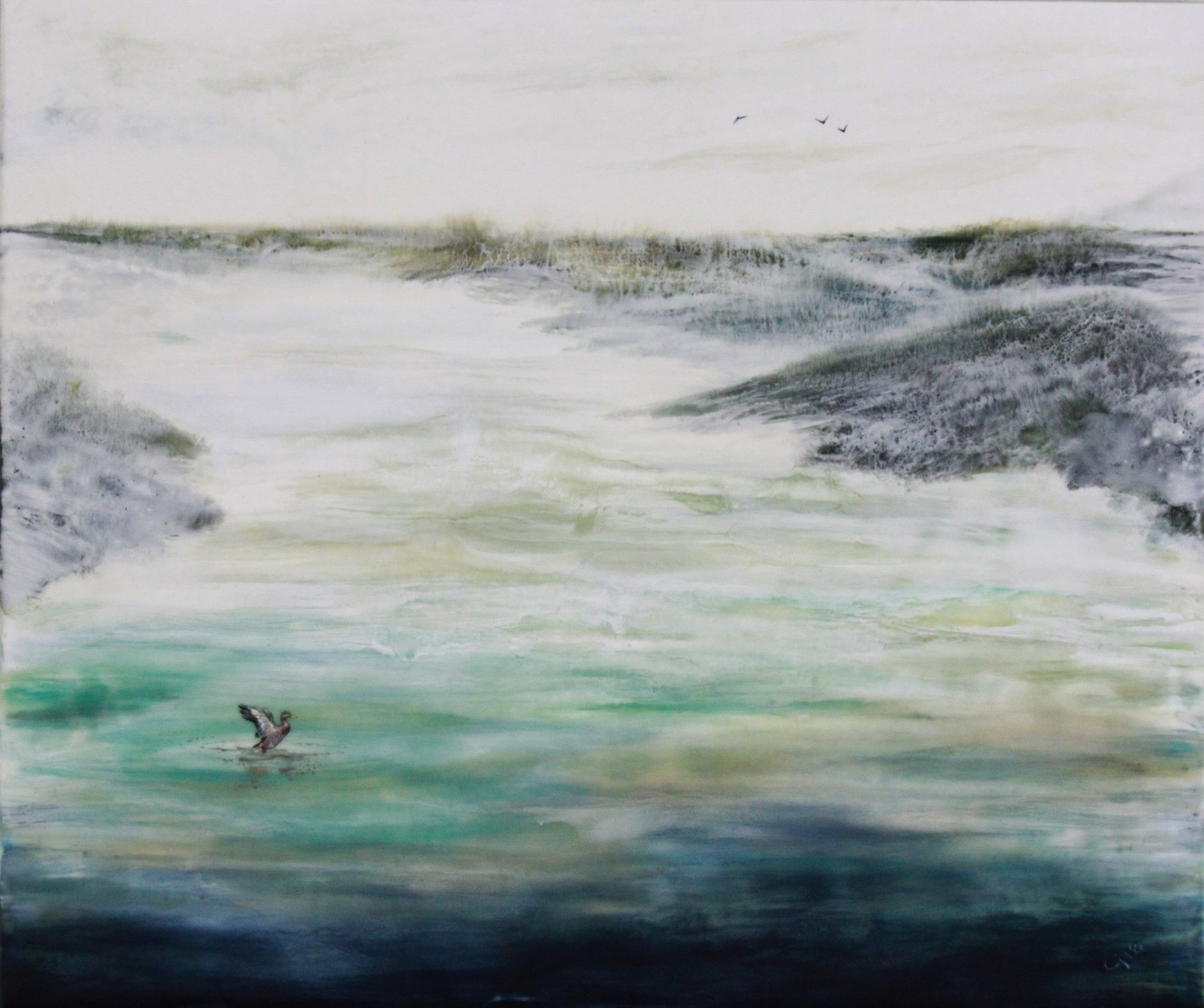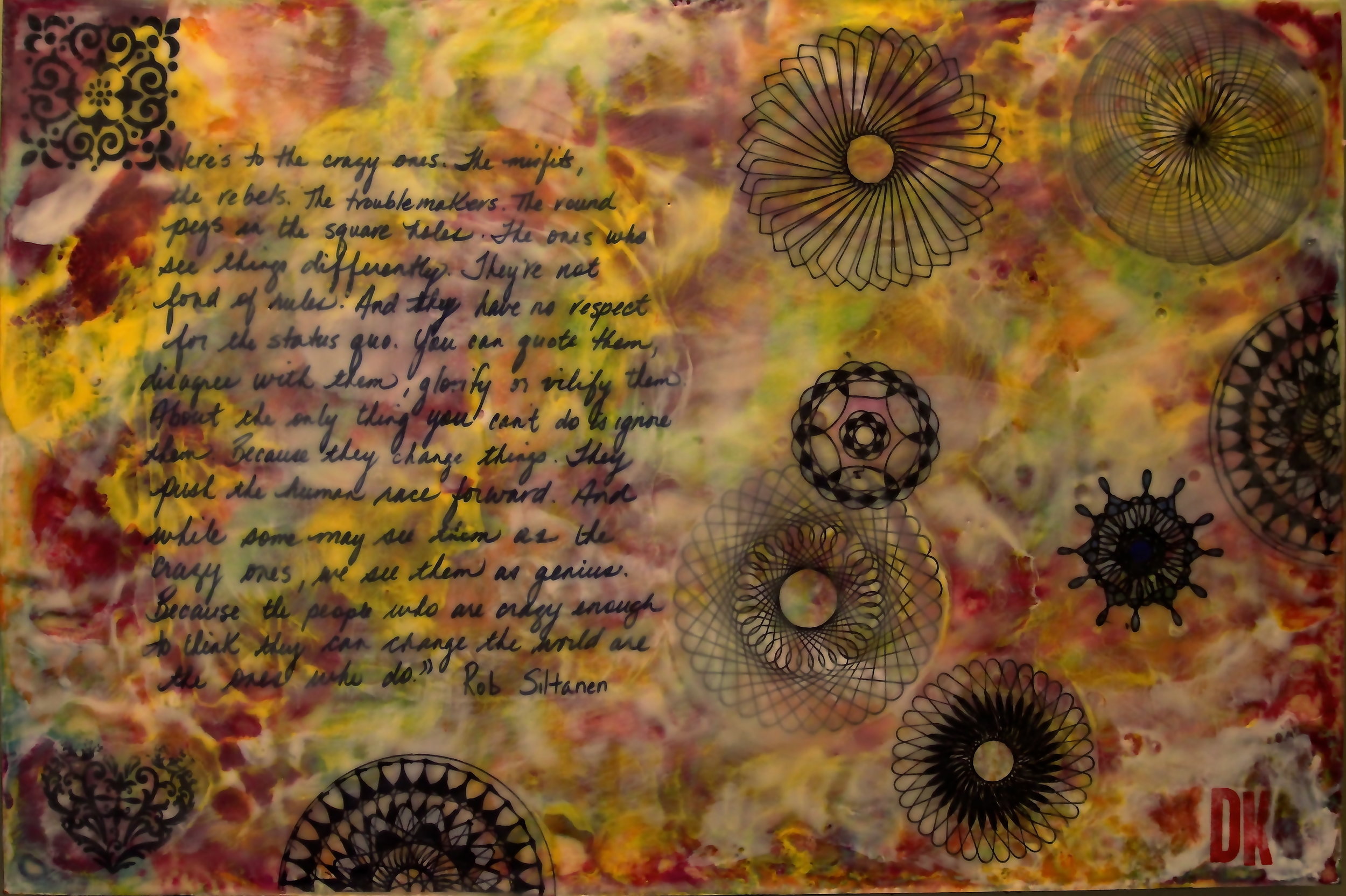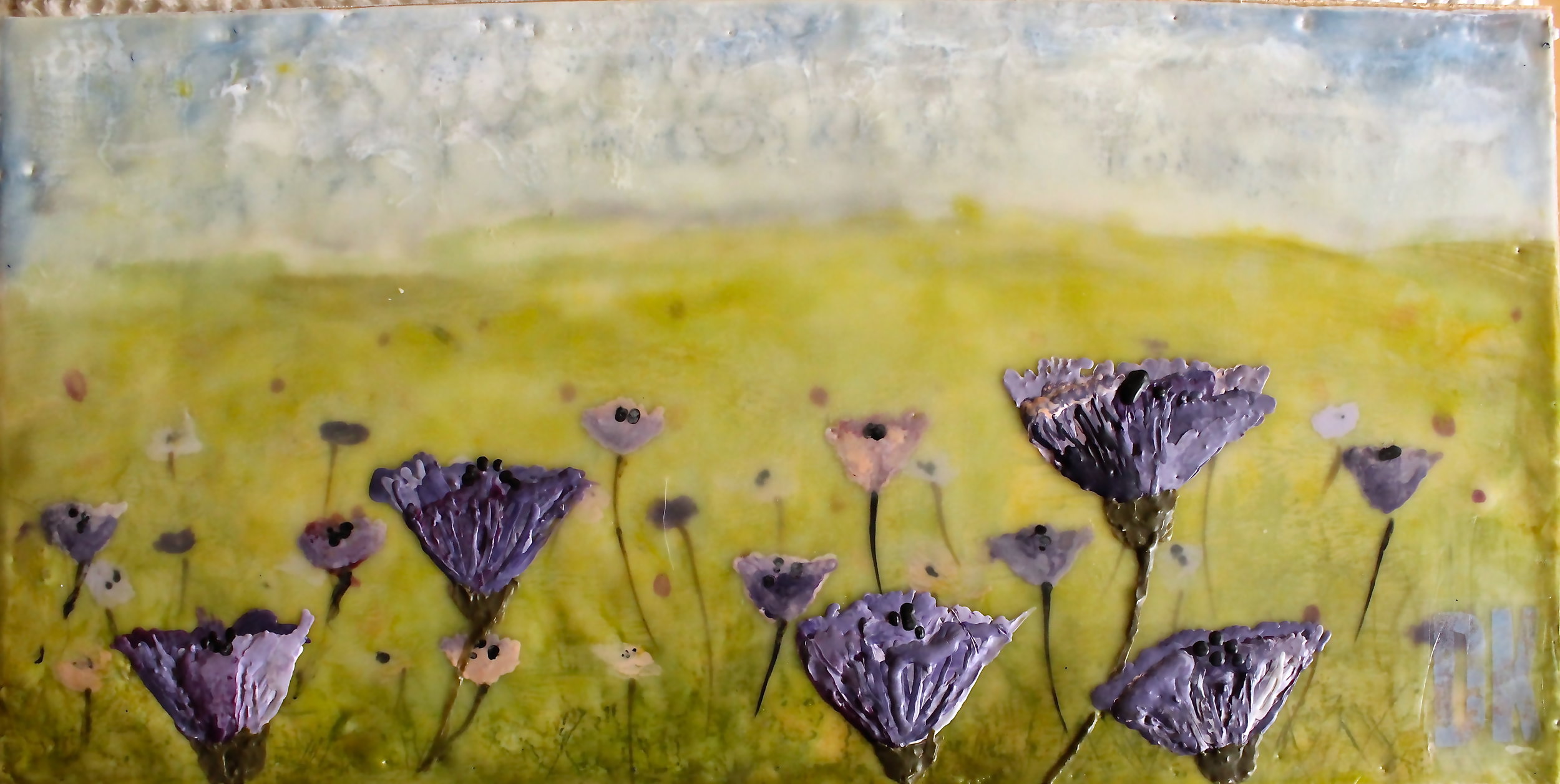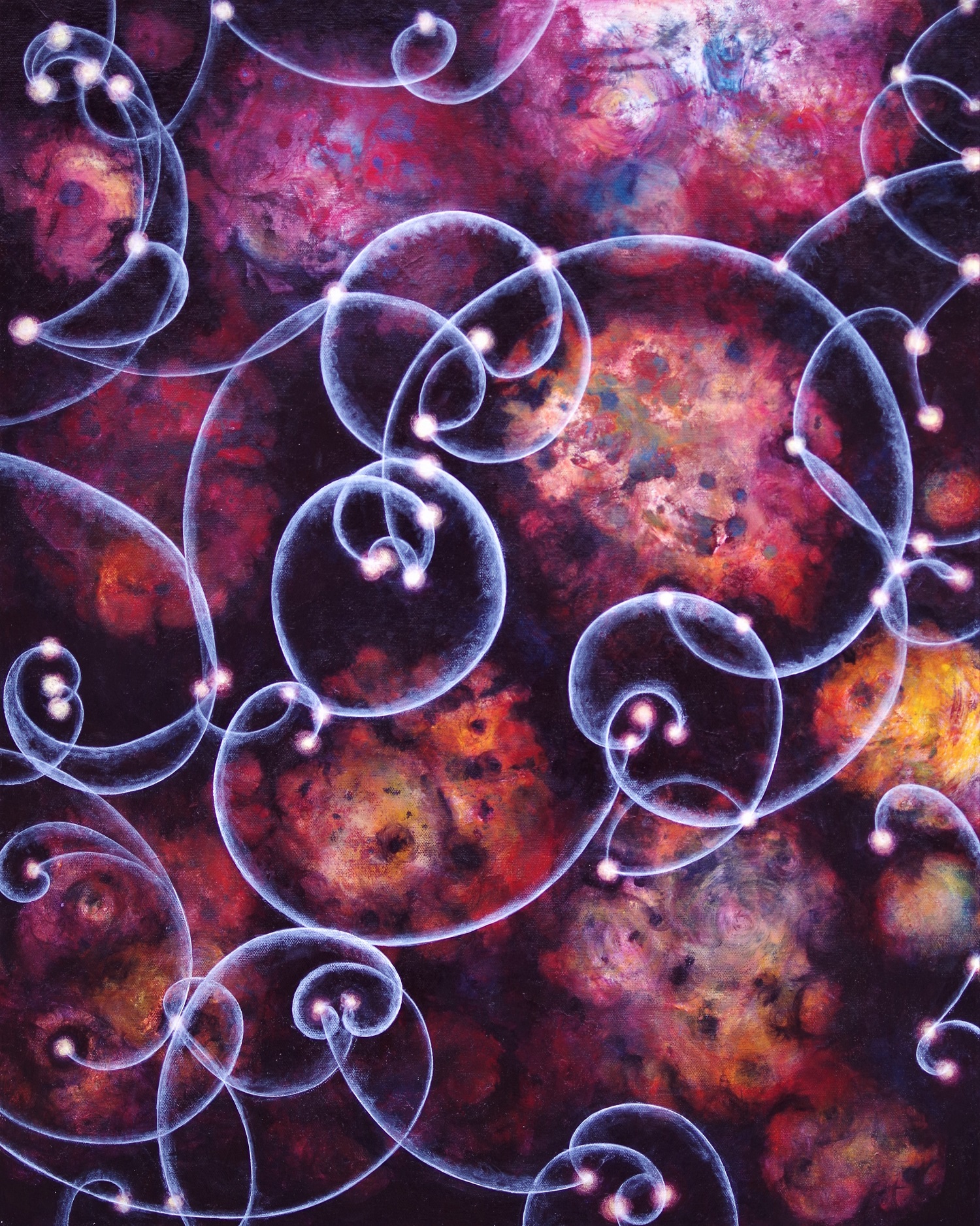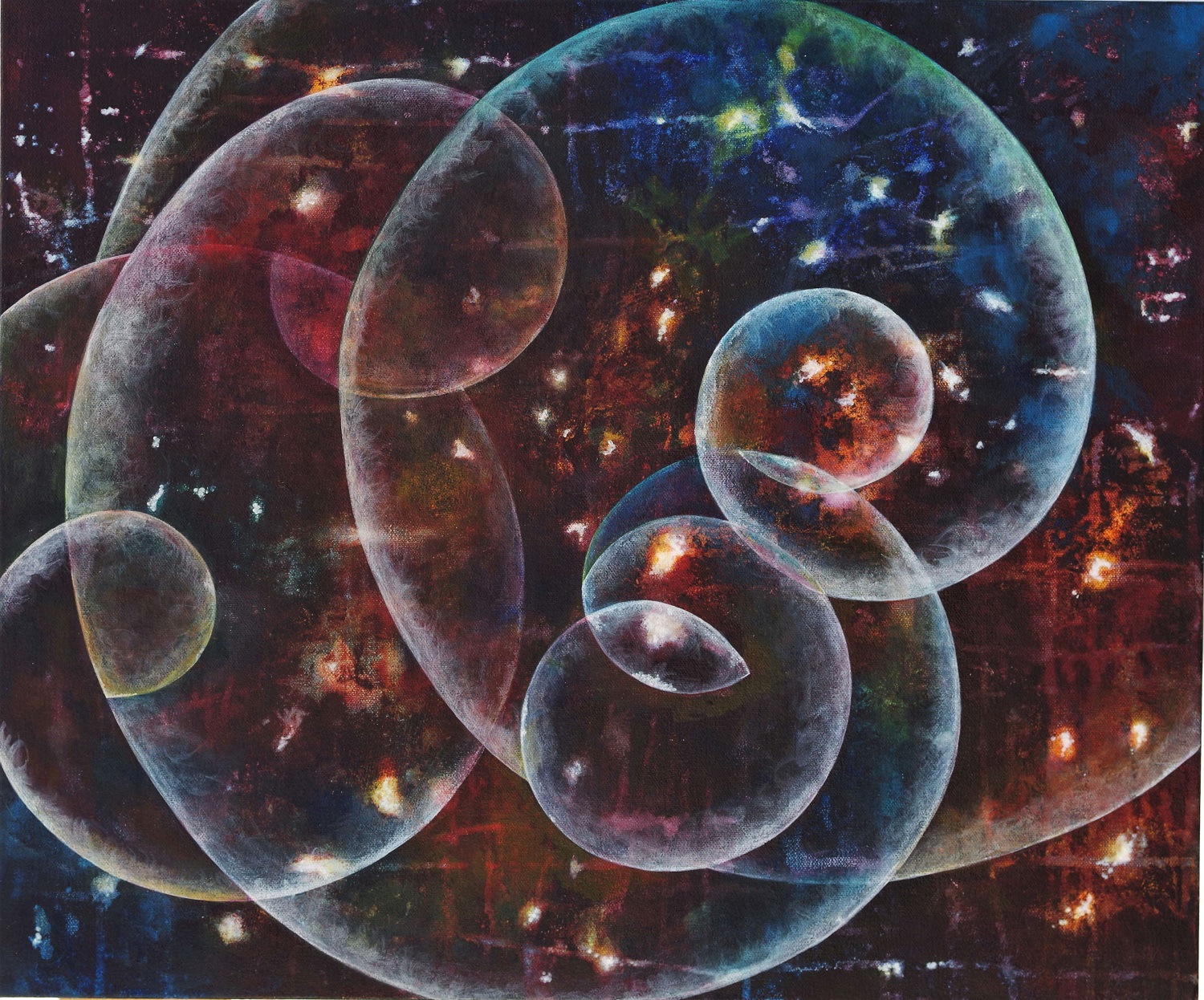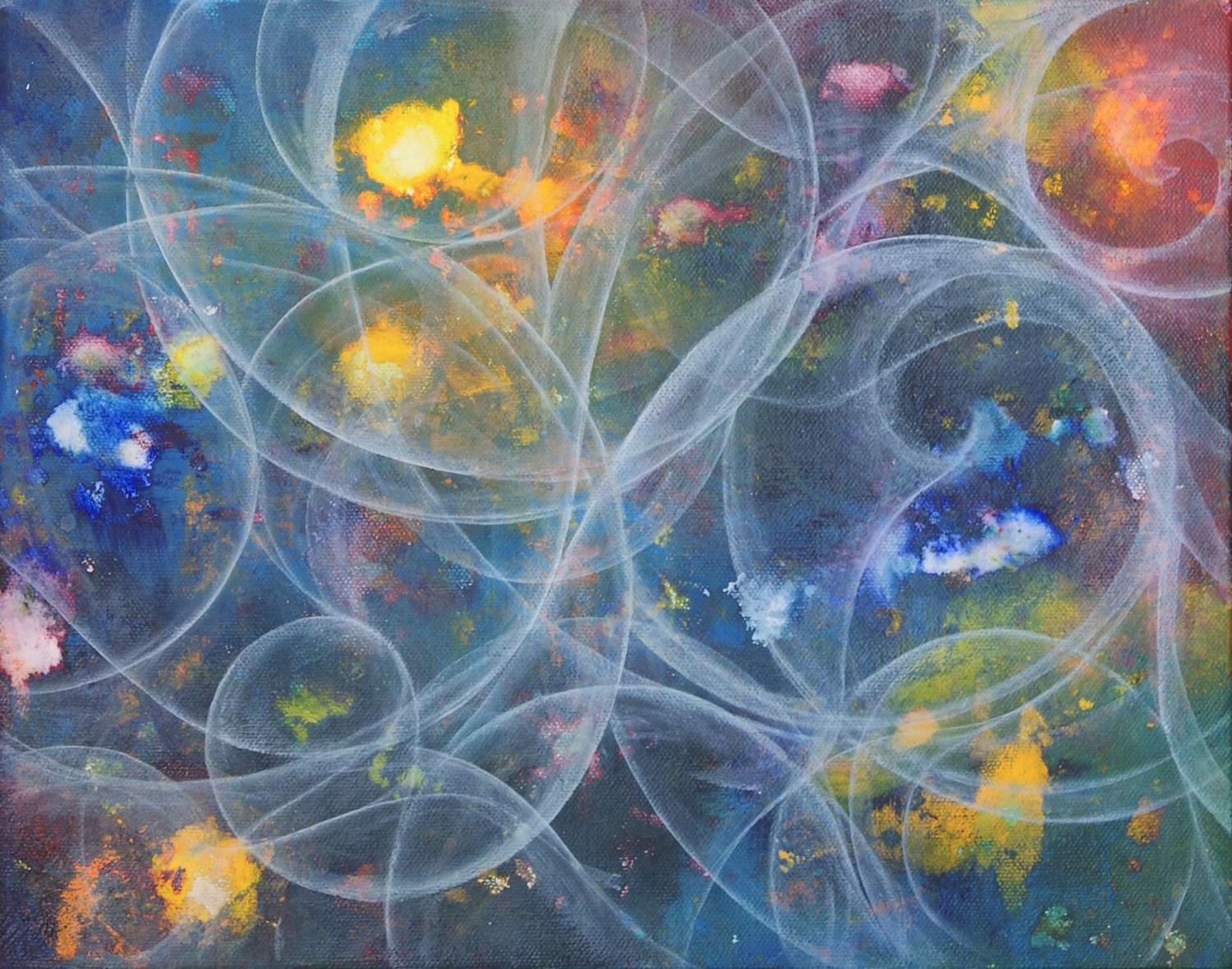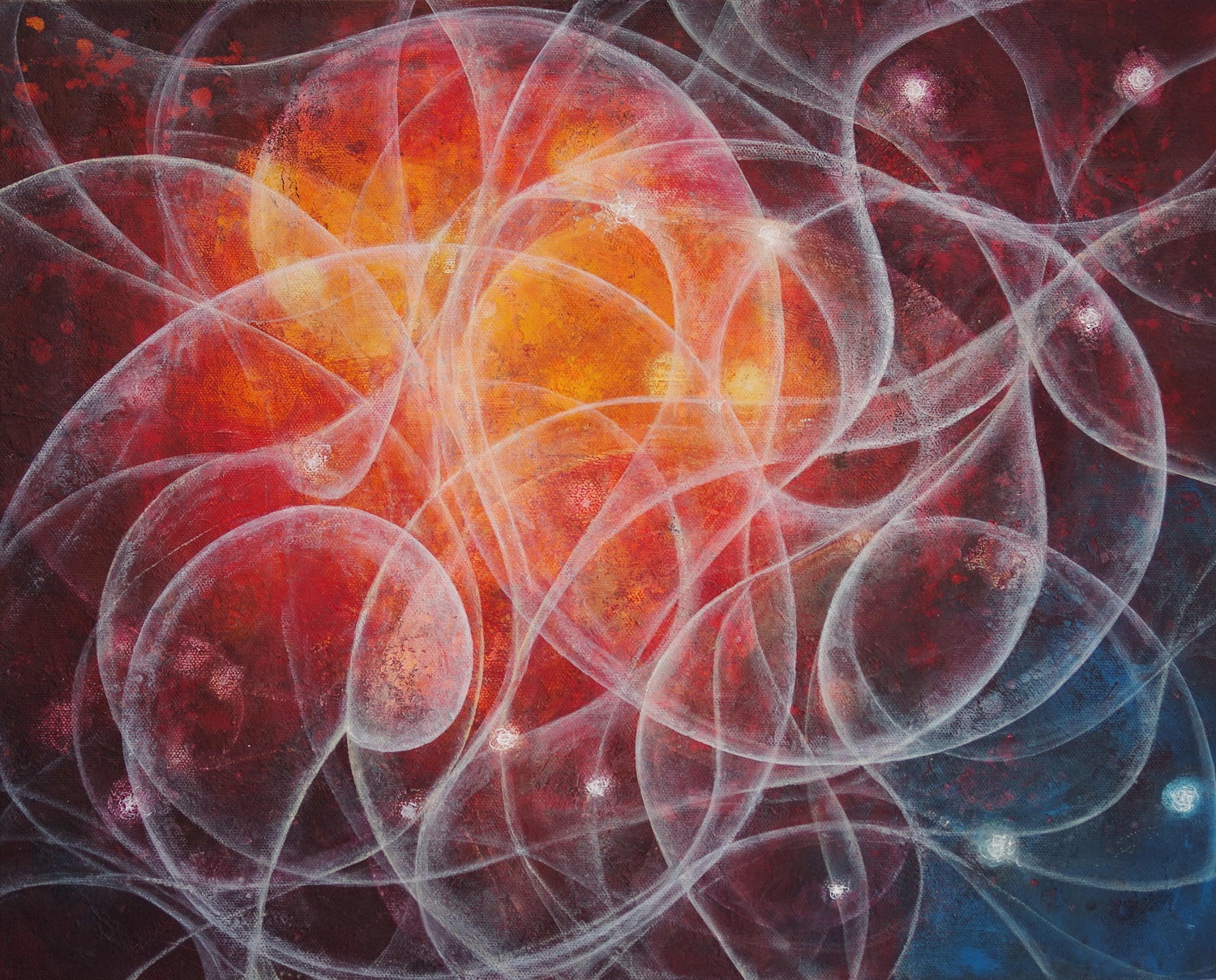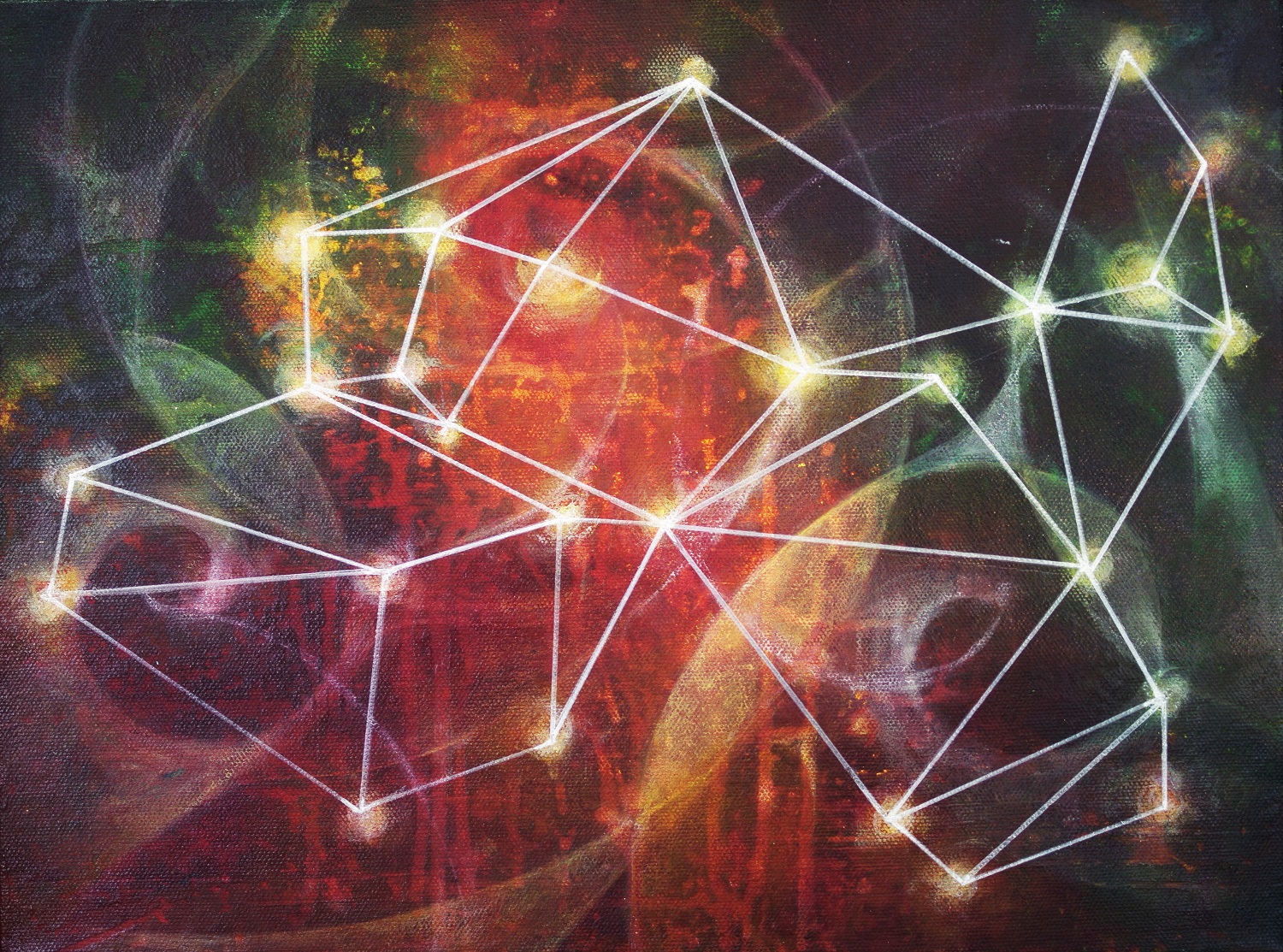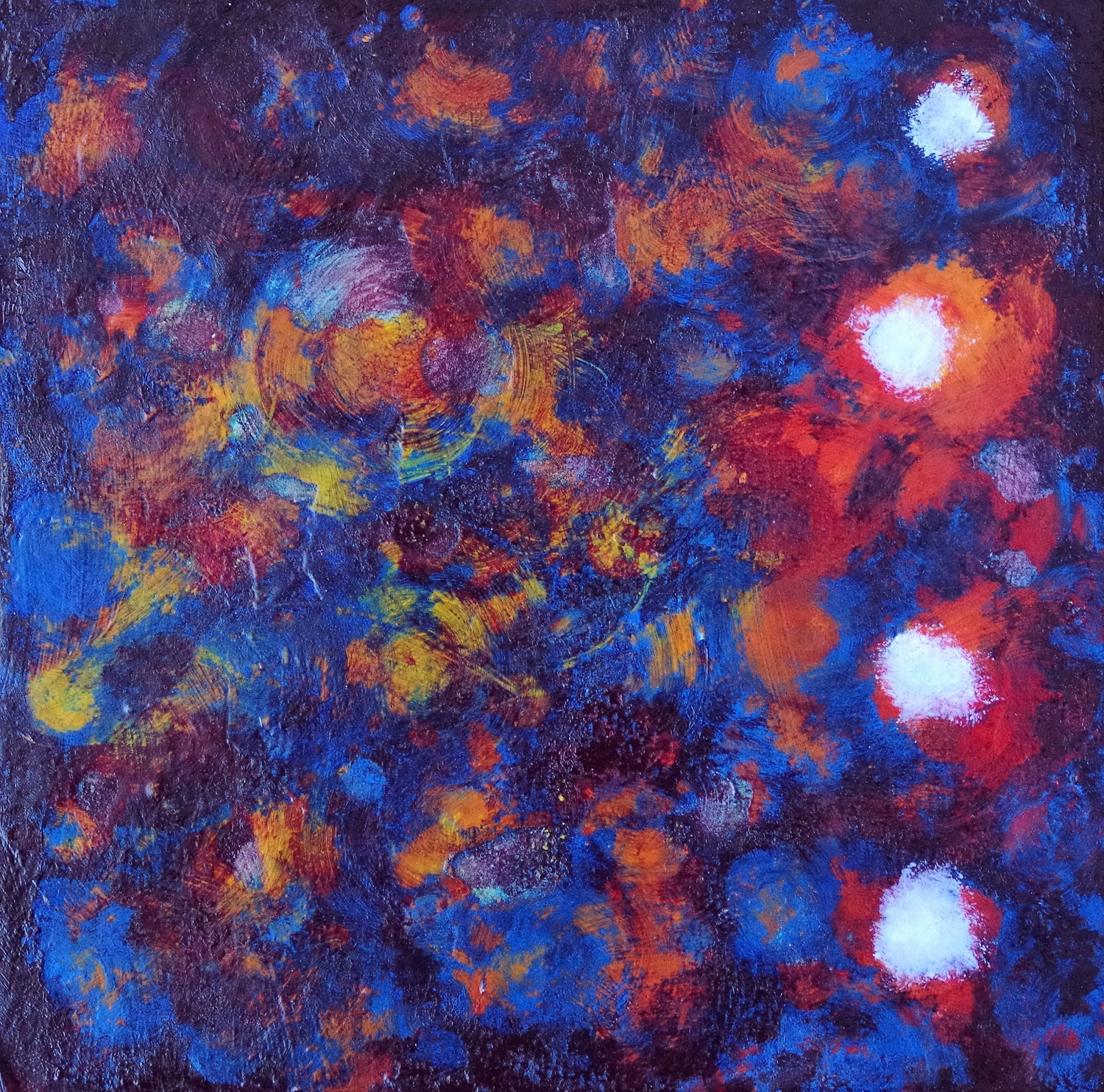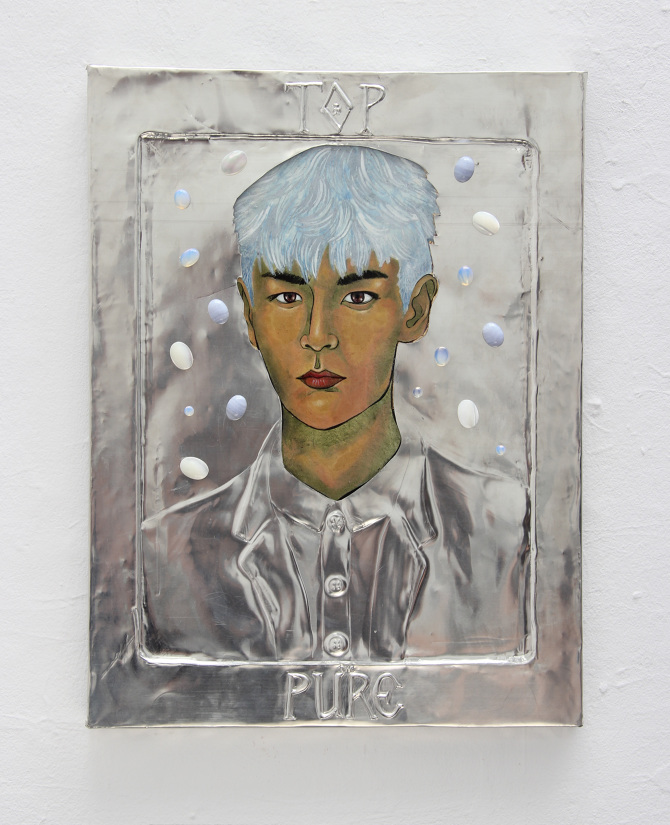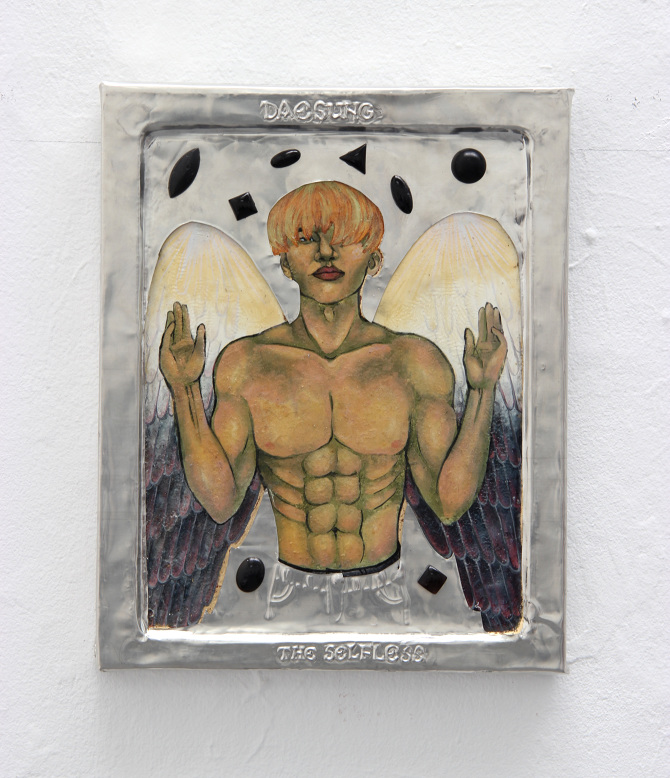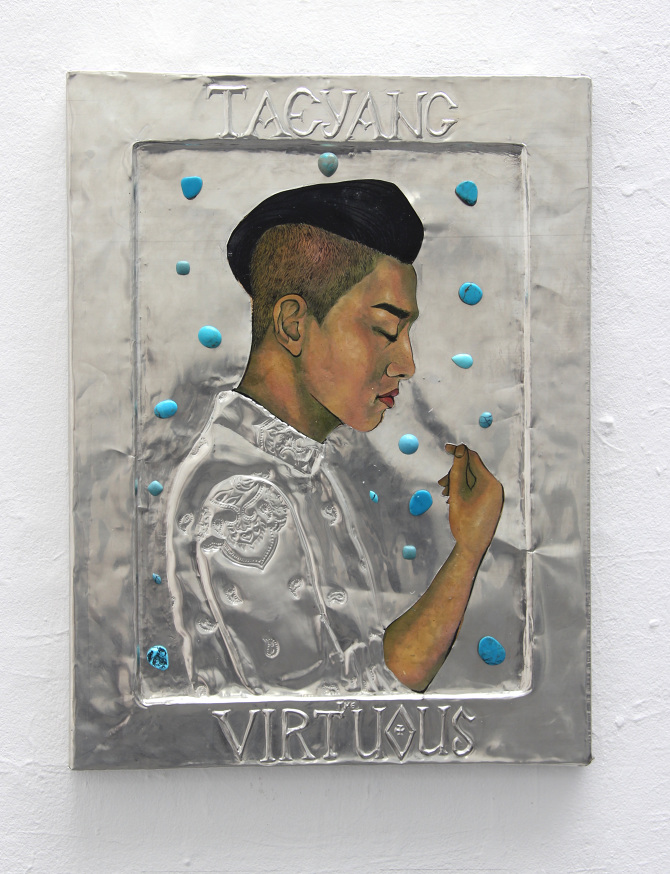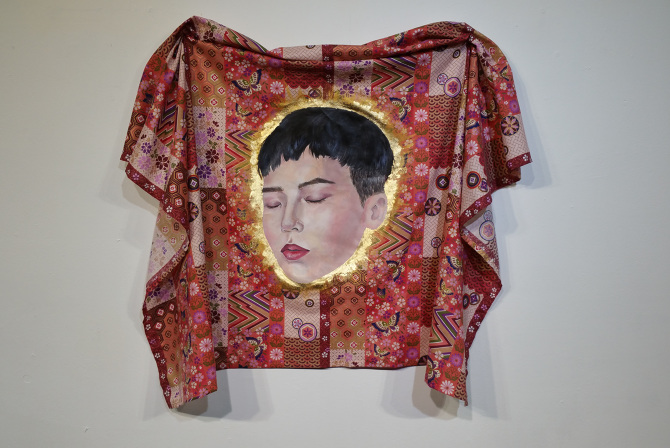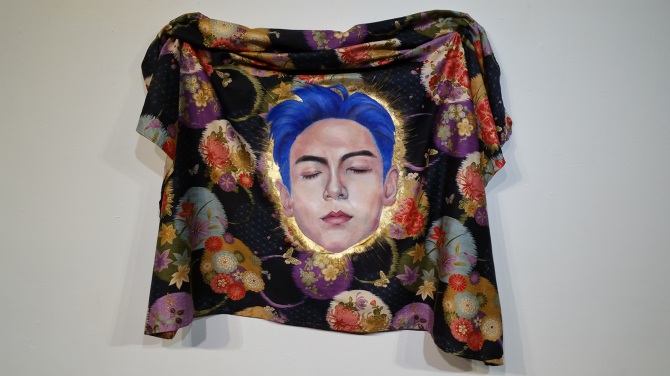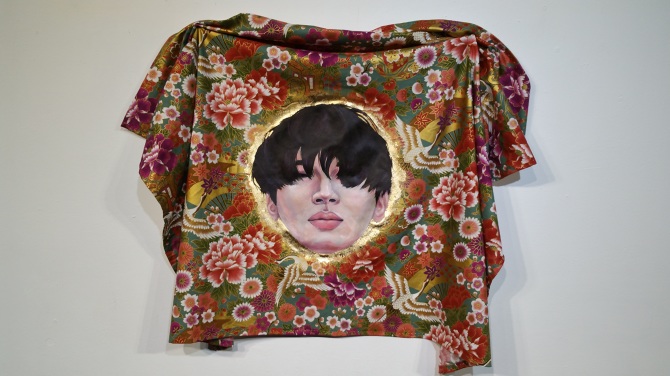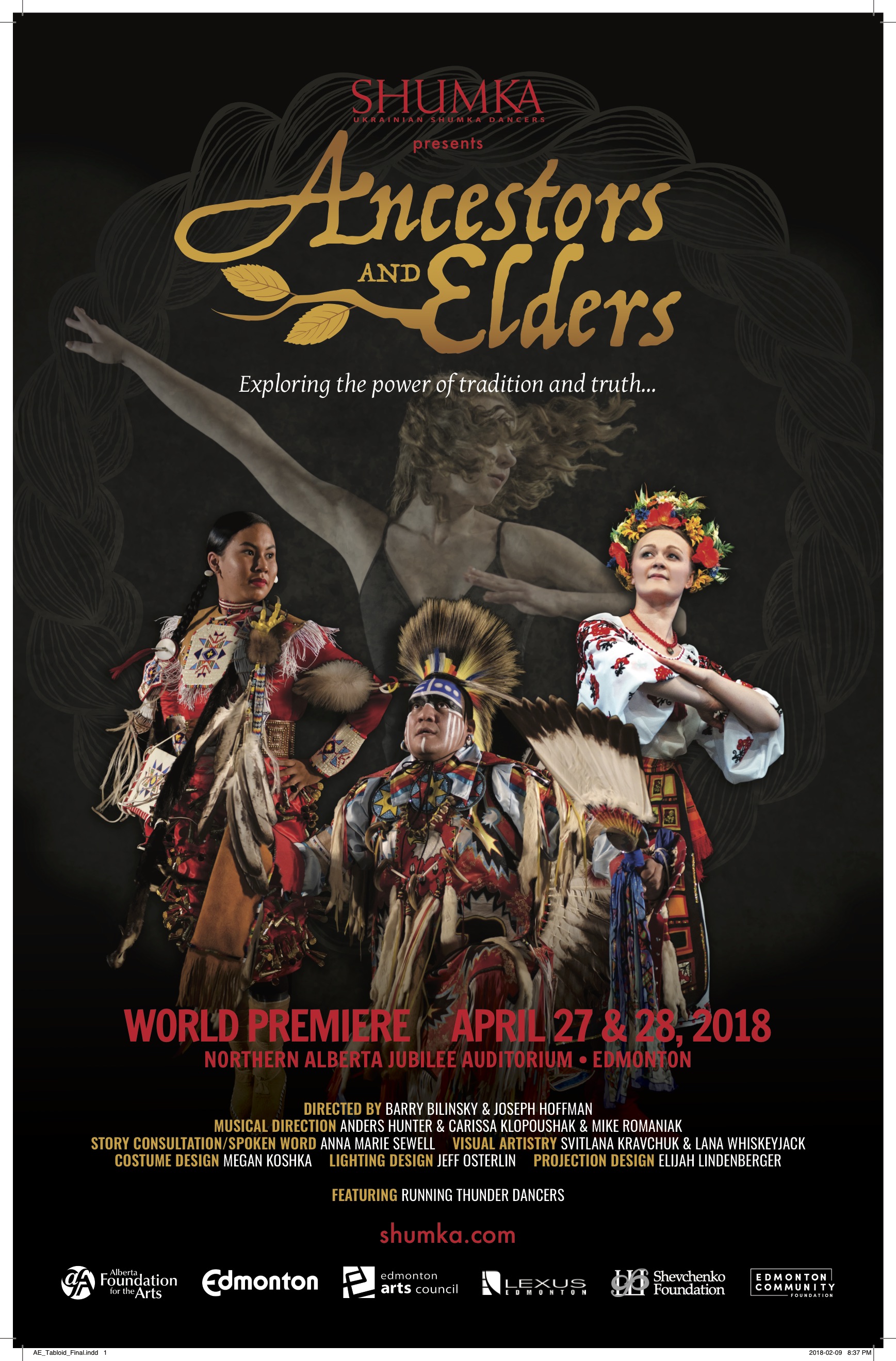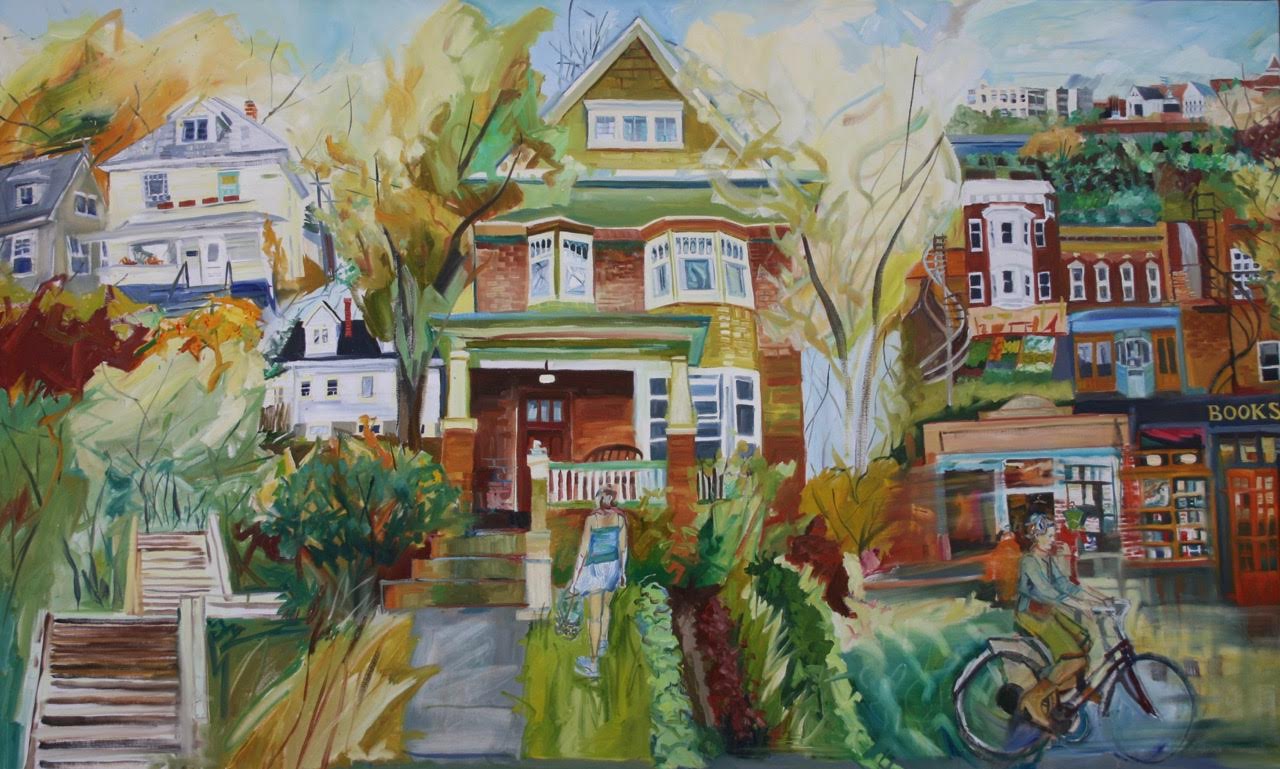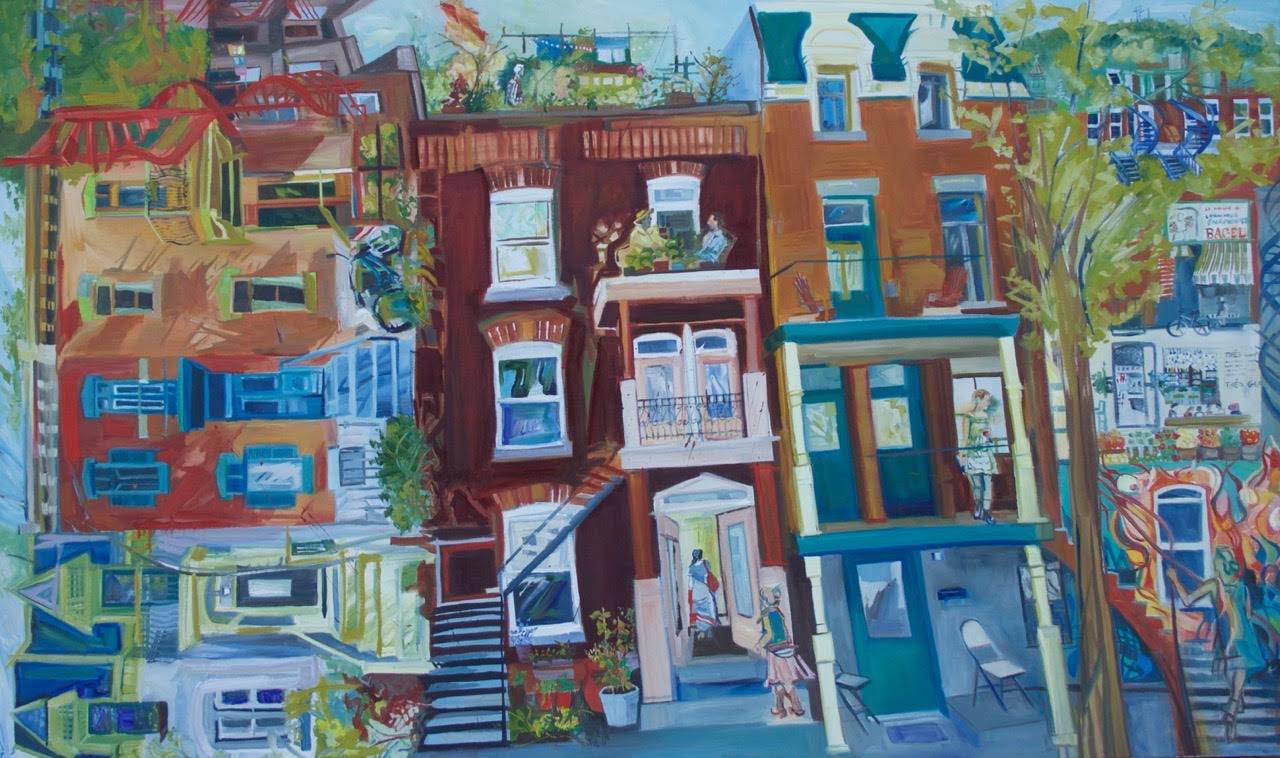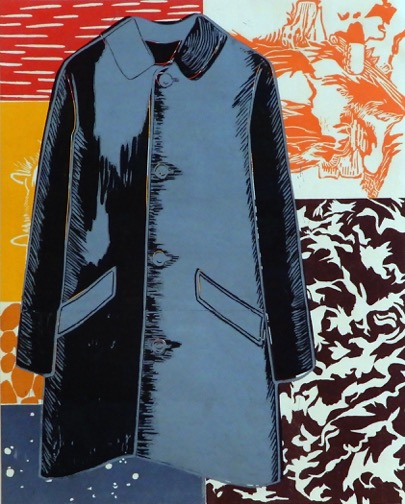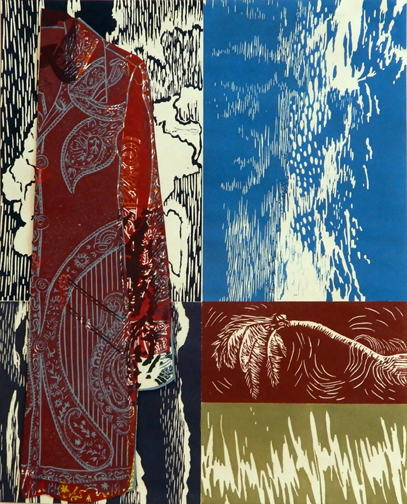My work is not intended to be a faithful reproduction of the landscape before me. Instead I paint by feel. The paintings that evoke the most emotion are those completed on location where I am able to allow my surroundings and the weather to dictate how I proceed. I try not to worry about the ending, rather I let the painting unfold and track its own course across my paper.
For me painting allows that perfect quiet, where I am peaceful and at peace with myself, and my surroundings. It's an escape from the everyday, a chance to experience the earth more fully, a chance to breathe and know that all is well.
To put it simply, I paint because it makes me happy. My hope is that the viewer can find a similar joy and peace in my work.
I was born in Cheltenham, England, in 1968 and moved to Kingston, Ontario, in the winter of 1992. When I first arrived in Canada I was unable to work while I waited for my papers, so I made use of the time by enrolling in some art classes which I enjoyed very much. In 2002 I graduated from the University of Alberta's Extension centre with a Fine Arts certificate. Since 2007 I have been pursuing my art full time and in May of 2011 I opened The Daffodil Gallery in the heart of Edmonton’s Gallery district which sadly closed early 2016.
More of Karen's creations here!
Living on the Land: Artist Statement
About a year ago I began painting bears. I’m not sure why, I think I just woke up one morning and thought I want to paint bears, so I did. As I began to create I became more and more fascinated by the bears - their shapes and how they were so much a part of the landscape that
surrounded them. I decided to explore a technique that was quite different and a little risky. I thought, as the bears and the landscape were so dependant on each other, why not make the bear appear from the background of the painting rather than painting the bear on top or beside it. Using a reductive technique I began to lift the watercolours from the yupo paper (such is the beauty of this synthetic paper) and slowly began to reveal the shape of the bear.
After the first painting I knew I was onto something special. The bears were less obvious, you had to work a little to see them and they took on a mysterious, almost ghostlike quality.
I spoke to a well-respected Cree friend of mine and explained to her how I was feeling when I painted the bears - it had become a spiritual, meditative process. I asked her her thoughts on calling the collection “Spirit Bears”. She encouraged me, telling me it was important to follow
my creative process and my heart. I did a little research on these special bears and discovered that they are neither an albino nor a polar bear, but in face the Spirit Bear is a rare white North American black bear with an unusual recessive gene (similar to the gene that causes red hair in humans) found almost exclusively in the Great Bear Rainforest. Officially named Kermode bears, they were named after Frank Kermode, former director of the Royal B.C. Museum.
In the Tsimshianic languages the Kermode or Spirit Bear is known as moksgm’ol.
Kermode bears hold a prominent place in the oral traditions of the indigenous peoples of the area. There are various telling of how and why the bears became white but the story goes something like this: Raven, The Creator, wanted something to remind him of the Long White
Time, when the earth was covered in snow and ice. Raven chose Black Bear, the keeper of dreams and memory to help him. Black Bear was found, as he always is, as a constellation of the stars in the night sky. Black Bear agreed to let one out of every ten Black Bears turn white to remind Raven of the misery of the great ice age. In return Raven set aside a special area of the world for these bears – now known as the Great Bear Rainforest. It was a remote paradise where the bears were to live in peace forever.
I wanted to thank my friend for her encouragement, Michelle Nieviadomy is an incredible woman with many accolades and well respected in all she does. She is speaks Cree, freely shares her heritage and knowledge only asking for respect and love from those, like me, who now call themselves Canadian. To express my gratitude and bring some awareness to the
roughly 60 distinct indigenous languages I decided I would name each of the Spirit Bear Moksgm’ol, paintings an indigenous word relating to the bear and the painting.
I have since developed the collection and have widened the focus to include other Canadian Wildlife. I wanted to capture many animals in the same way I had the bears and so all the paintings you see are painted in a reductive technique. All the paintings are not intended to be true representations of the animal. I prefer to feel the subject out, creating the animal from the
background. The organic nature of the background allows the colour of each creature to blend into and from the paint, making that animal part of the surroundings, a being that lives in harmony with the land. If only we could learn to do the same...
